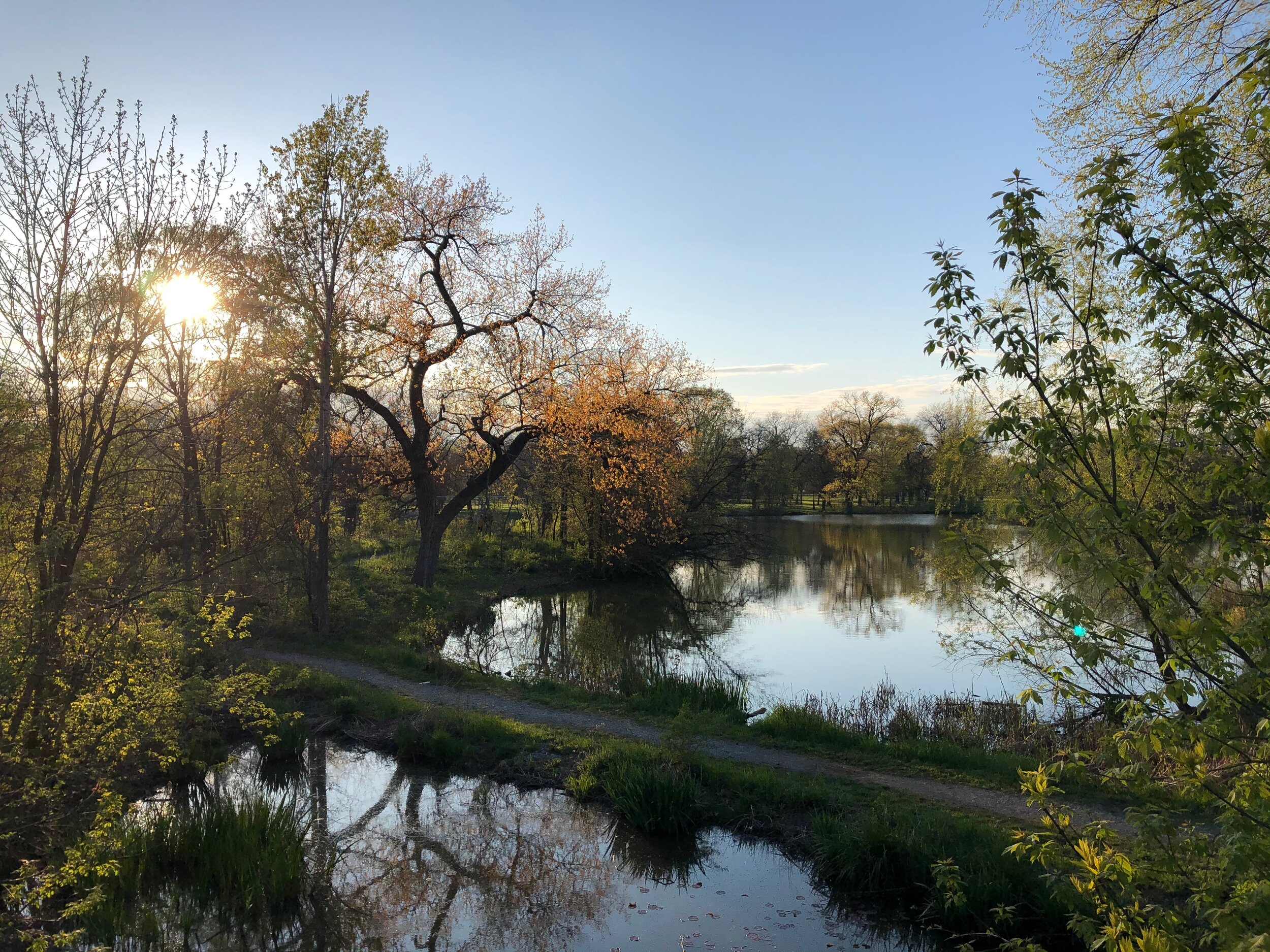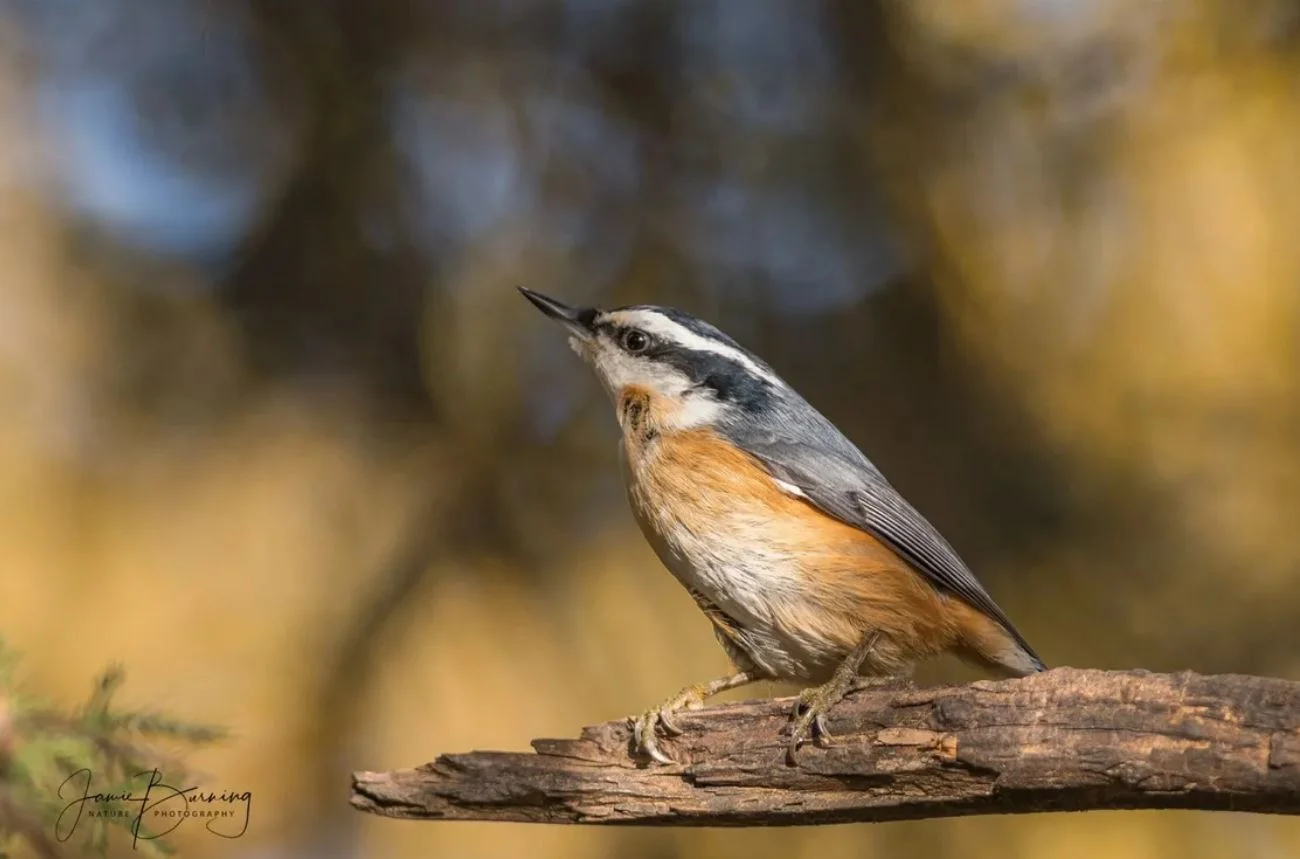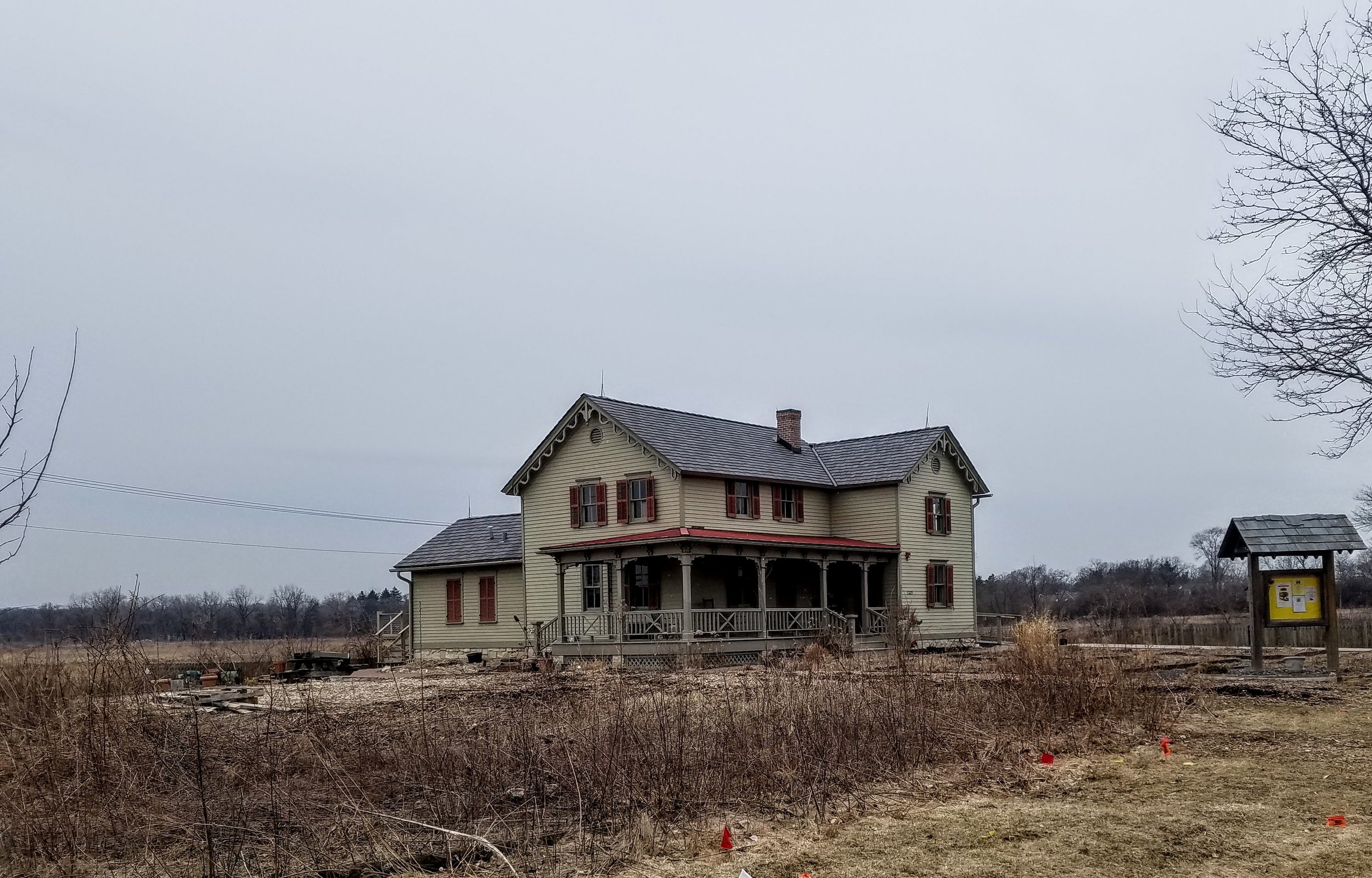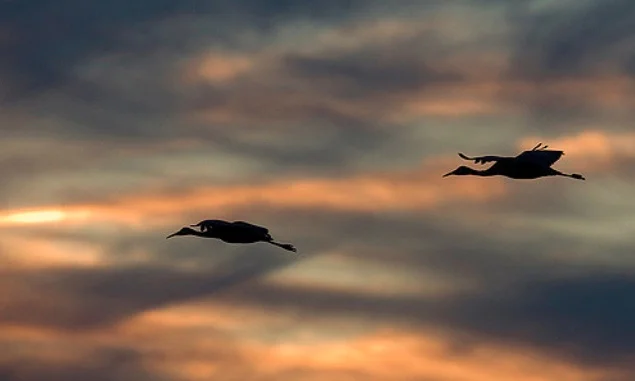Favorite Birding Spots in the Chicago Area
There are so many great birding spots in the Chicago area, and they vary a lot by season. According to eBird, the top 3 spots in the Chicago area by bird species count are Montrose Point Bird Sanctuary, Illinois Beach State Park, and Jackson Park. But there are great birding hotspots all over the area, so read through the longer lists by region.
North Park Village is a hidden nature oasis on the north side. This Chicago Park District nature preserve contains 46 acres of woodlands, wetlands, and grassland. The Nature Center is located within the North Park Village campus, a former tuberculosis sanitarium that now includes an apartment complex and offices in the original buildings—including Chicago Bird Alliance’s office.
Garfield Park is the westmost part of the Chicago Park and Boulevard System. It features a large set of lagoons with marshy borders, an island, and shrubby areas. The best areas for birding are around the western lagoon. The famous Garfield Park Conservatory is two blocks north on Central Park Boulevard.
Arguably, the best single birding spot in the Chicago area, the promontory and adjacent dune habitats contain what is probably the region’s most heavily birded site: the famous “Magic Hedge.”
City of Chicago - North
North Park Village is a hidden nature oasis on the north side. This Chicago Park District nature preserve contains 46 acres of woodlands, wetlands, and grassland. The Nature Center is located within the North Park Village campus, a former tuberculosis sanitarium that now includes an apartment complex and offices in the original buildings—including Chicago Bird Alliance’s office.
Arguably, the best single birding spot in the Chicago area, the promontory and adjacent dune habitats contain what is probably the region’s most heavily birded site: the famous “Magic Hedge.”
North Pond is a 12-acre nature sanctuary that attracts many land and waterbirds during migration seasons.
Long known as the best single location in Illinois for Snowy Owls, this site holds promise for becoming a migrant hotspot once a restoration program is completed .
Birders walk the edge of this 6.5-acre fenced sanctuary in Lincoln Park to see and hear the large variety of migrants that use this wooded oasis.
City of Chicago - South
Washington Park is a large park in Chicago’s Hyde Park neighborhood. The Park consists of two large loops; one north and one south of Morgan Drive and contains a wide variety of habitat types ranging from grassy meadow to forest to lagoon.
During spring, fall and winter (if the lake remains unfrozen), large numbers of waterbirds appear on the lake.
Hegewisch Marsh is 129 acres of native marsh, wetland, and wet prairie habitats along the Calumet River. The site has over a mile of trails through the scenic park.
in addition to the many common species that regularly appear, such rarities as Marbled Godwit, Red Knot and Long-billed Dowitcher have also been observed in recent years.
Its open water attracts a myriad of waterfowl, and the marshy portions have provided nesting habitat for Pied-billed Grebes, Least Bitterns and Common Moorhens.
The 250 acres of primarily marsh and oaks support a host of migrants (from ducks to warblers and sparrows), while such uncommon species as Virginia Rail and Yellow-headed Blackbird have nested here.
Given its varied plantings and location, the site hosts numerous migrants and wintering ducks.
This 543-acre unit of the Chicago Park District provides a mosaic of lakefront, open water, marsh, grassland and woods.
City of Chicago - West
Garfield Park is the westmost part of the Chicago Park and Boulevard System. It features a large set of lagoons with marshy borders, an island, and shrubby areas. The best areas for birding are around the western lagoon. The famous Garfield Park Conservatory is two blocks north on Central Park Boulevard.
Two lagoons (complete with an island), marsh, shrubs and wildflowers make this park an attractive stopover for many migrants.
Humboldt Park is a large park in Chicago’s Humboldt Park neighborhood on the western side of the city. Several intertwining loops intersect the park. East of Humboldt Dr., follow a loop around the big lagoon to look for ducks in the open water, as well as Great Blue Herons, Green Herons and Black-crowned Night-Herons along the water’s edge and warblers among the tree tops.
Columbus Park is a National Historic Landmark and is considered the masterpiece of Jens Jensen, now known as the dean of Prairie-style landscape architecture.
Cook County - North
Because Gillson Park juts out into the lake, it is an outstanding place to see migratory landbirds as well as waterfowl. This 60-acre park on Lake Michigan with has a diversity of habitats - beach, dune, parkland and native plantings - plus a great view of the lake.
A former CCC work camp, and WWII prisonor camp, Camp Pine is slowly reverting to more natural habitat and is home to field sparrows, catbirds and other summer nesters. Of special interest is the shrub prairie restoration bordering the main trail to the east, as that path leaves the woods.
The Garden consists of 350 acres of lagoons, oak woods, re-created prairie and many formal gardens.
Each spring and fall virtually all of the warblers that regularly move through the region are reported in the lagoons.
his 165-acre lake is home to one of the most important heron rookeries in the region.
This 1,200-acre area of restored prairie, oak woods, marsh and open water is notable for migrating waterbirds and woodland songbirds.
This virgin wood, owned by the Forest Preserve District of Cook County, is a surprise find in central Evanston.
This 85-acre Village of Glenview park focuses on both natural and cultural history and provides some very good birding as well.
This Village of Wilmette park is an excellent place to observe fall migration along Lake Michigan.
Cook County - South
The 585 acres of grassland, marsh, scattered evergreens and deciduous trees that comprise this site draw a good selection of species throughout the year.
Many grassland birds of concern, such as the Henslow’s sparrow, bobolink, dickcissel, field sparrow, eastern meadowlark and others are found at Orland.
Cook County - West
Located on the eastern bank of the Des Plaines River, Thatcher Woods has miles of unpaved walking trails through woodlands and floodplain forest. Birding highlights are spring and fall migration as birds migrate along the Des Plaines River Valley. Visitors to the Hal Tyrrell Trailside Museum of Natural History will discover displays of live native animals, colorful wildflower gardens, information about local wildlife and their habitats, and more.
On spring evenings, American Woodcocks are easily seen performing their mating displays.
Lake County
As the only open-water tamarack bog in Illinois, this wetland is a botanist’s dream.
This park, with its alternating dunes and swales, supports a variety of flora and fauna unsurpassed anywhere else in the state.
This large marina owned and operated by the Illinois Department of Natural Resources has one of the largest concentrations of wintering gulls in the area.
DuPage County
The Morton Arboretum encompasses 1,700 acres of diverse habitat, including restored prairie, deciduous woods and evergreen plantations.
Waterfall Glen Forest Preserve, surrounded by Argonne National Laboratory, is one of the most diverse and scenic forest preserves in DuPage County.
















